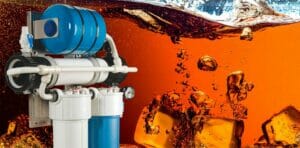Whether used in the cooking process or as an ingredient itself, water plays a significant role in the taste of food and beverages. High-quality menu items need high-quality water, but what does that mean?
Identifying water quality issues
What the water is being used for — food, beverages or in equipment, such as steamers — determines water quality requirements. For example, water makes up 83% of fountain soda. Water for clear, crisp-tasting fountain beverages must be free of suspended solids, chlorine, taste and odor.
Chefs and operators can typically identify a water issue by bad taste, color, and/or odor. However, there are invisible contaminants that can also cause problems; pH level is not detectable by sight, smell or odor, but is important for beverages, cooking and kitchen appliances.
In addition to pH levels, water quality issues that can affect water used as an ingredient include:
- Hardness (calcium & magnesium)
- Suspended solids (i.e. sediment)
- Dissolved solids
- Organic materials
Any item above the maximum contaminant level (a guideline set forth by the EPA) is not recommended for consumption in food and/or beverages.
Addressing water quality issues
To remedy water quality issues, operators need to partner an equipment provider with water quality expertise. The equipment an operation needs is determined based on which contaminant(s) are being removed and the desired end result.
Operations that employ a properly designed and maintained water filtration system will find that their water quality will improve — impacting the flavor of ingredient water used for beverages and water-based foods, such as soup.
Finding the right water filtration solution
At the end of the day, water quality impacts menu quality. Give your guests a great experience by addressing water issues with an effective water filtration solution.
Want to hear more from the Antunes water expert? Check out this article: Know your H20: Water Filtration Q&A with Melissa Neckopulos.


 Making Menus Happen: Stadium-Inspired Eats
Making Menus Happen: Stadium-Inspired Eats